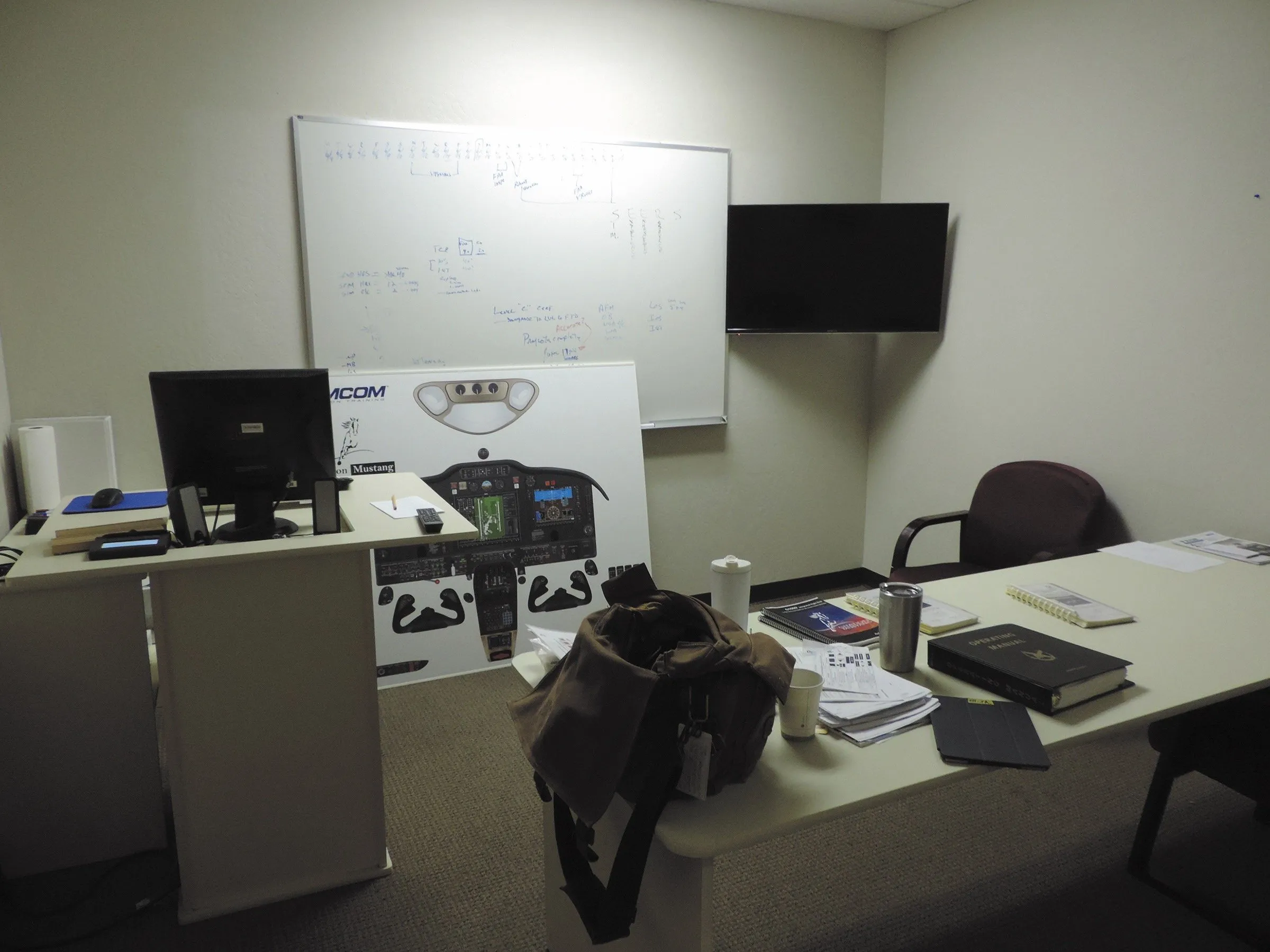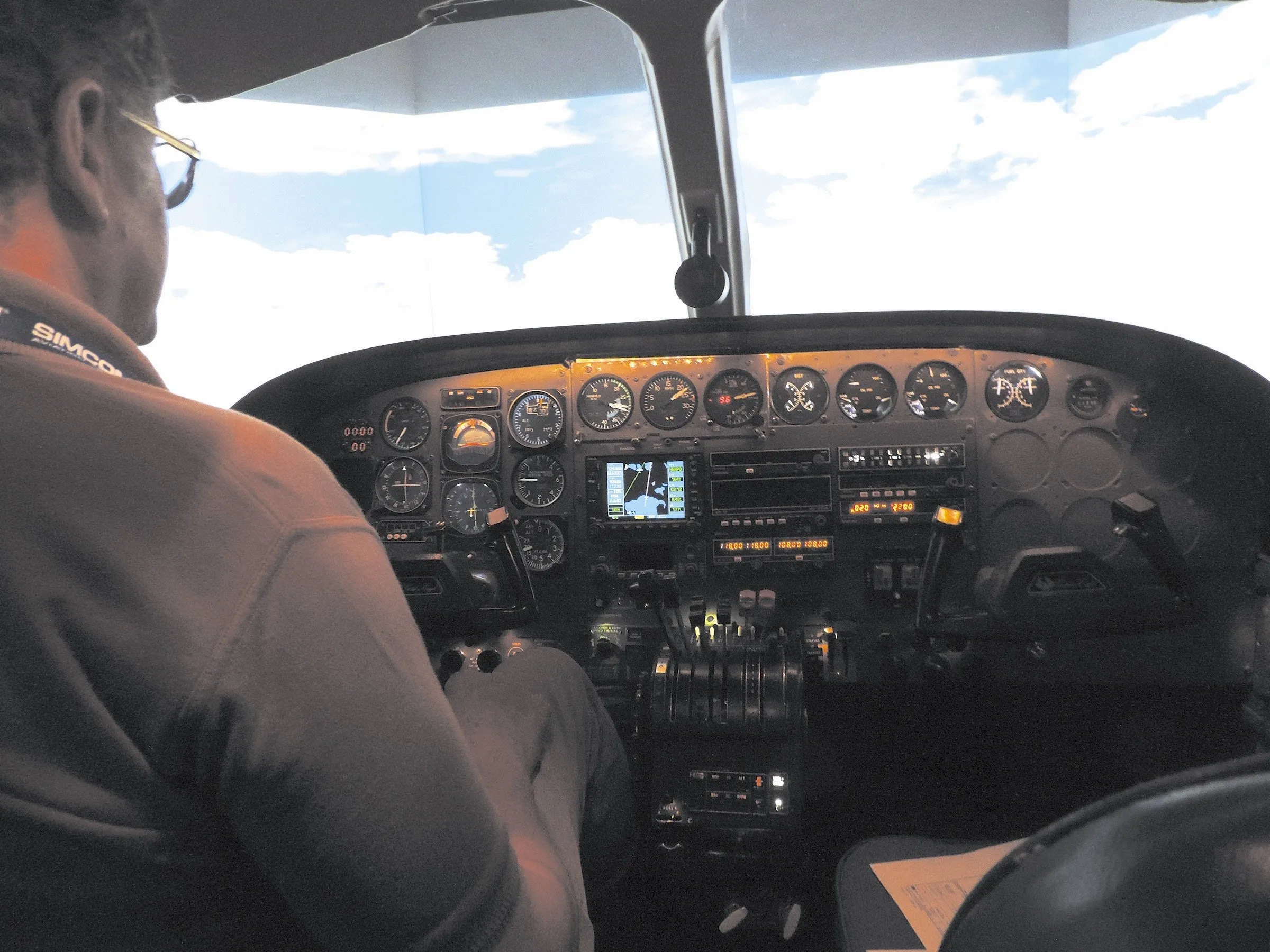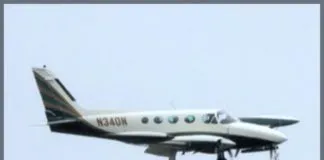Many insurance companies require their insureds, particularly those flying more complex aircraft, to periodically attend recurrent training. Mine requires it every two years for my twin-engine, pressurized, Cessna 340A. This was one of those years, so I had some decisions to make about quality of training, availability, and economics.

Where to Go
A mechanic I trust once told me that it’s a good idea to take your aircraft to a different shop for the annual once in a while. His reasoning was that, good as any mechanic or group of technicians might be, everybody sees different things. Going to a different shop occasionally allows fresh eyes to inspect your prized bird and maybe find something others have missed.
Don’t believe me? True story: The elevator, rudder and trims on my aircraft are operated by cables that run under the floorboards, down the cabin, into the tail section and to the respective controls—pretty normal stuff.
Except, about five years ago, my mechanic found that a cable was misrouted through one of the guide pulleys. Now, there’s no way that could have happened in use; it had to have been done on installation. Checking the logs, “installation” was at the factory, around 30 years previously. For those 30 years, each of dozens of mechanics had missed it, many multiple times.
Right there I made the decision to alternate doing my annual at my local shop with someone else. Now, if you think about it, the same idea applies to training. Consequently, it’s a good idea to mix it up occasionally. If you’ve been to the same facility for the last few years, or worse, used the same local instructor, look elsewhere occasionally for a broader base of experience.
Why We Go
Let’s be honest. One big reason we go to recurrent training is because of the insurance mandate. Sure, we recognize the value of the training and would plan to go anyway, but often “plans” don’t quite make it into “schedules.” So, without the insurance requirement, we might not go at all or perhaps not as often as we should.
So whether we go because the insurance forces us to, or we just go because it’s a good idea, what are we looking for while we’re there? That answer is variable with each of us.
I’ve often written about the challenges we face maintaining real instrument proficiency. Obviously, regaining slipping proficiency is one common goal. Or, perhaps your goal might lean more toward a systems refresher. Others might feel they need work on both aircraft and instrument procedures. A good recurrent training curriculum will cover all of these.
But figure out your personal objectives before you go so you can share those with the instructor to make sure that’s what you get. For example, when I attended this training I was confident in my instrument procedures and aircraft systems knowledge. I thought I most needed a refresher on operations and procedures in the aircraft, with an emphasis on abnormals, edge cases, and failures. We covered everything, but focused on the areas I’d selected.

SIMCOM for Me this Year
I recently learned of a facility I’d not previously known. Aircraft Simulator Training in Santa Rosa, CA, advertises in my type-club magazine and I decided to give them a try. Due to some date confusion on my part, I thought I was beginning this process with a couple months of flexibility. In reality, I had a couple weeks. In e-mail discussions I was impressed with the approach that Aircraft Simulator Training took, but we just couldn’t get the schedule to work. So, I looked elsewhere.
Calling as a student (not an editor), I reached out to another facility I’d previously visited, Glass Simulator Center (now “SIMPRO”) in Aurora, IL, but they didn’t return my call. Form your own conclusion from that.
I skipped Recurrent Training Center (RTC). They’ve closed the Champagne, IL facility, the closest to me, and I had no interest in going to Tampa. Besides I’d trained with RTC last time. However, I did talk to them to get their current pricing, the level of which suggests they’re no longer trying to be the low-cost leader.
In a previous article about recurrent sim training facilities (“Sim Training Centers” in November, 2016), I’d somewhat bashed SIMCOM, saying, “SIMCOM training is top tier, but their business model recently seems to mirror the big corporate centers with pricing to match.” Because of that conclusion I really didn’t want to go to SIMCOM. But, I checked with them and found a somewhat different attitude. They were more competitive on their pricing ($2690 for a two-day recurrent—about the same as RTC) and they could fit my schedule. So, it was off to SIMCOM in Scottsdale just a few days later.
SIMCOM Scottsdale
I’d been to this facility a couple times before. I always found their training to be excellent, but their focus seemed to be on jets and turboprops with an “Oh, yeah, we also have some piston training if that’s really what you want” attitude that was disconcerting. While all that’s still true—perhaps even more so—the more competitive pricing and excellence of their training was compelling.
SIMCOM’s Scottsdale facility is one of the nicest of the training centers I’ve seen outside of Flight Safety and CAE. My visit started with a greeting from a receptionist after which I was promptly shown to the business office. There we quickly completed the necessary paperwork and I paid for the course. I was then shown to the break room where I waited for the instructor. (I was early.)
To the extent practical, SIMCOM schedules its training on client demand. This means that much of their training is one on one. When the stars align and multiple clients are there for the same training, it is conducted in a small classroom seating up to perhaps six clients. Being a solo student, I met with my instructor in an office. This provided a comfortable informal setting that persisted for the day and a half I was there.
SIMCOM has restructured its pricing. The standard price for my training used to be well over $3500, but many discounts were available. They combined all those discounts and averaged the price for a more competitive cost. Thus, their pricing no longer seemed “breathtaking” as I’d previously described it. Yet, quality recurrent training isn’t cheap.
Most instructors at facilities like RTC and SIMCOM are retired been-there-done-that pros, including my instructor, Mr. Ray Campbell. In previous lives, Ray had owned a flight school, a charter company and flown Part 91 corporate. He knew his stuff, and his easy-going, southern-gentleman style was refreshing, right down to the unnecessary, “Mr. Frank” he used to address me.

Where Do You Start?
After introductions and the obligatory war stories, training began with a systems-focused test to see how much I knew—or didn’t. We graded it only to define where we needed to review. I thought I knew the systems pretty well, but the test still revealed more than a few weak areas to strengthen.
Of course, sim time is a significant part of the course and that’s where the hiccups started. SIMCOM advertises “state-of-the-art simulators.” That might be true for other aircraft, but the Twin Cessna was, to be blunt, old, tired, far from modern, and simply buggy. Apparently, when SIMCOM started they designed and built their own sims, and this Cessna 421 sim was their very first. When it worked correctly, it was fine; there were many times when it didn’t.
(Yes, it’s a 421 sim, but has profiles and swappable instruments for other Twin Cessnas. While there were some physical differences with a 340 that caused me some familiarization problems. This is a reasonable compromise.)
Ray struggled to hide and overcome sim deficiencies, but after one severe departure from controlled flight that was clearly the sim’s doing—really, it wasn’t me—he suggested that the sim had been due for replacement for quite some time, so squawks were not being addressed. At times the sim would just do its own thing, leaving nothing the pilot could do about the impending crash.
I’ve rehashed my sim time, trying to conclude if the sim’s deficiencies diminished the training. I’ve concluded that they did. The physical faithfulness of the sim allowed us to nicely review various procedures, which was quite valuable. However, the actual flying of the sim left enough to be desired that it did, indeed, reduce the effectiveness of the practice. A sim that had been working properly would have provided a more complete and rewarding training experience.
Simulator or Aircraft?
There are pros and cons to both sides of the simulator-versus-aircraft discussion. Let’s look at some.
Nothing flies just quite like your aircraft. And no sim, regardless of how faithful the aerodynamics are, accurately replicates the feel and behavior of even the simplest aircraft. No other aircraft is equipped just quite like yours is, and it’s unlikely that a sim comes very close at all. So, it makes sense to train in the aircraft you’ll fly.
When you train in your actual aircraft, you’re polishing every aspect of your proficiency, from buttonology on your equipment to handling the bird in those edge cases your CFI just loves to throw at you. The old expression goes, “Train like you fly and fly like you train.” That seems to say you should train in your aircraft.
Simulator aerodynamic fidelity ranges from unrealistic and horrible, to decent, but it never hits exact, even in airline Level D sims. I’ve personally flown a certified AATD simulating a Cessna 414 that would accelerate on an ILS with the power off. Trust me, the real airplane won’t do that. But, that’s an exception. Most sims have reasonably accurate aerodynamics that are adequate for our purposes. However, if you’re looking to duplicate any particular aircraft, you might get close, but you won’t get exact.
But, is that bad? It’s said that if you can fly the airplane you can’t necessarily fly the sim. But if you can fly the sim you can certainly fly the airplane. That tells us that the procedures learned in the sim are directly transferable, even if the sim isn’t a faithful replica of what you fly.
Plus, of course, you can do ever so much more in the sim than in the airplane. Adjust the weather to be exactly what you want. Cause failures you just can’t (or shouldn’t) duplicate in the airplane. The list goes on. Even little things like a runway incursion causing you to go around just can’t be done realistically in the airplane, but are trivial in the sim.
Then, there’s training. In an airplane, how many approaches can you fly in an hour? Three? Four if you really push? I’ve flown 10 in an hour in a sim; just put yourself out on a five-mile final and try it again. And again, and again, and again. Proficiency comes more quickly with that kind of repetition.
Finally, there’s cost. A modest airplane will cost over $100 per hour. Most ATD sims can be rented for $50 to $95 an hour. Factor in that you do more in an hour in the sim and the sim gives you at least a four-to-one cost advantage.
Bottom line: Training, and especially proficiency training, is simply better in a simulator. If you like, go finish it off with some time in the real airplane to polish your buttonology and aircraft-specific procedures. That’s the best of both worlds. —FB
Bottom Line
A good measure of a training event is if the student would willingly repeat it and recommend it to others. I’m encouraged by SIMCOM’s new, more competitive pricing, so that’s a win. The instructors and material are first rate—another win. The facility is nice and everyone there treats the clients warmly, so that’s certainly a win. This particular sim, however, was simply not acceptable.
Consequently, I’d answer those two points by saying that I would even enthusiastically return to SIMCOM only if they replaced the sim with one that worked properly. Until then, I’d not recommend this program. My advice to prospective SIMCOM clients would be to ask about the sim you’d use, ask its age and origin. Even talk to an instructor in that program to see if you can uncover any problems with the equipment. Finding none, attend with high expectations that will likely be met.
Frank Bowlin is a strong believer in simulator-based flight training. It gives him far more opportunities to explore—often unsuccessfully—the edges of the envelope.





